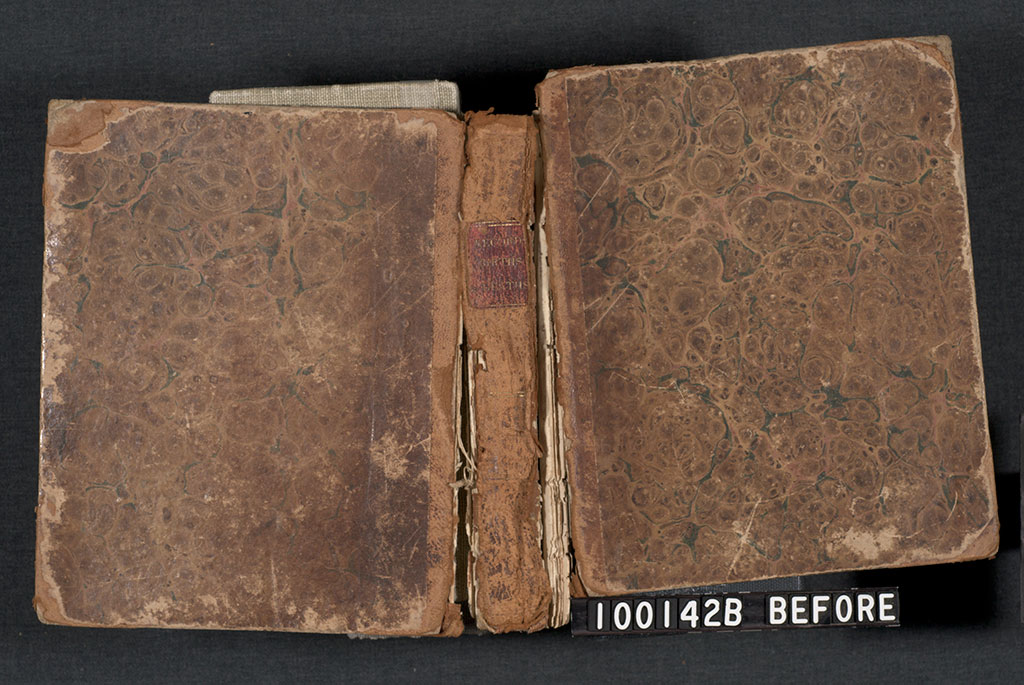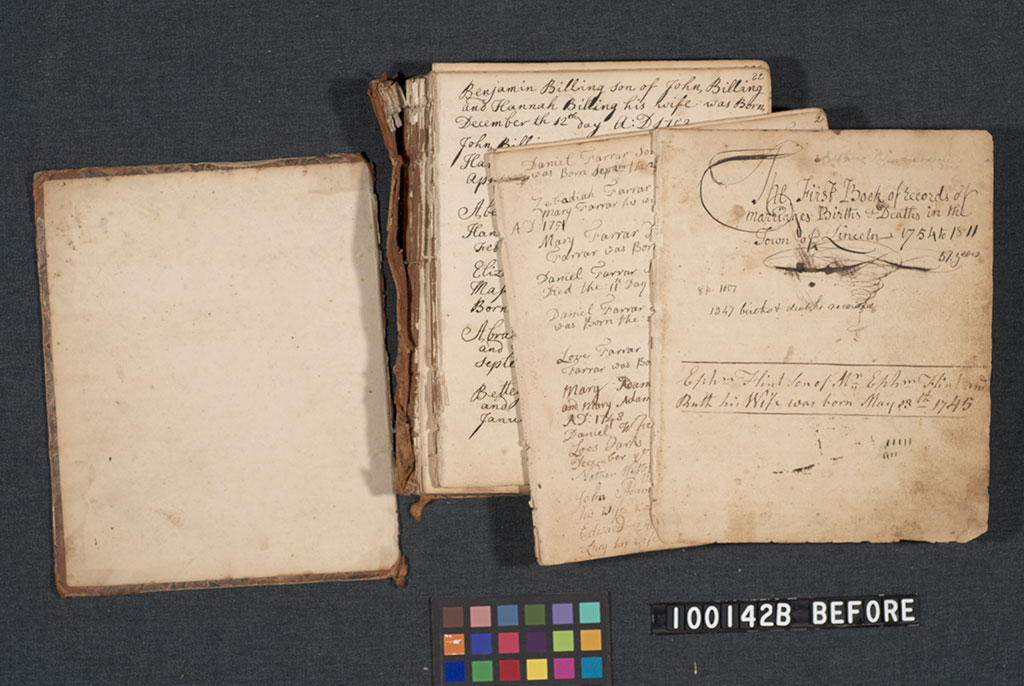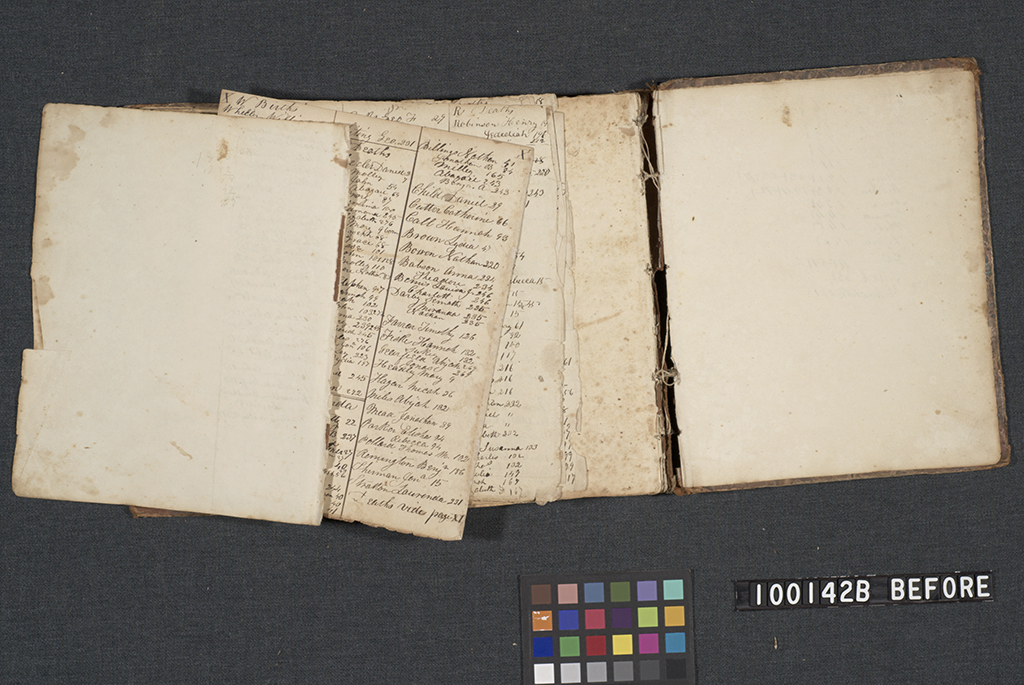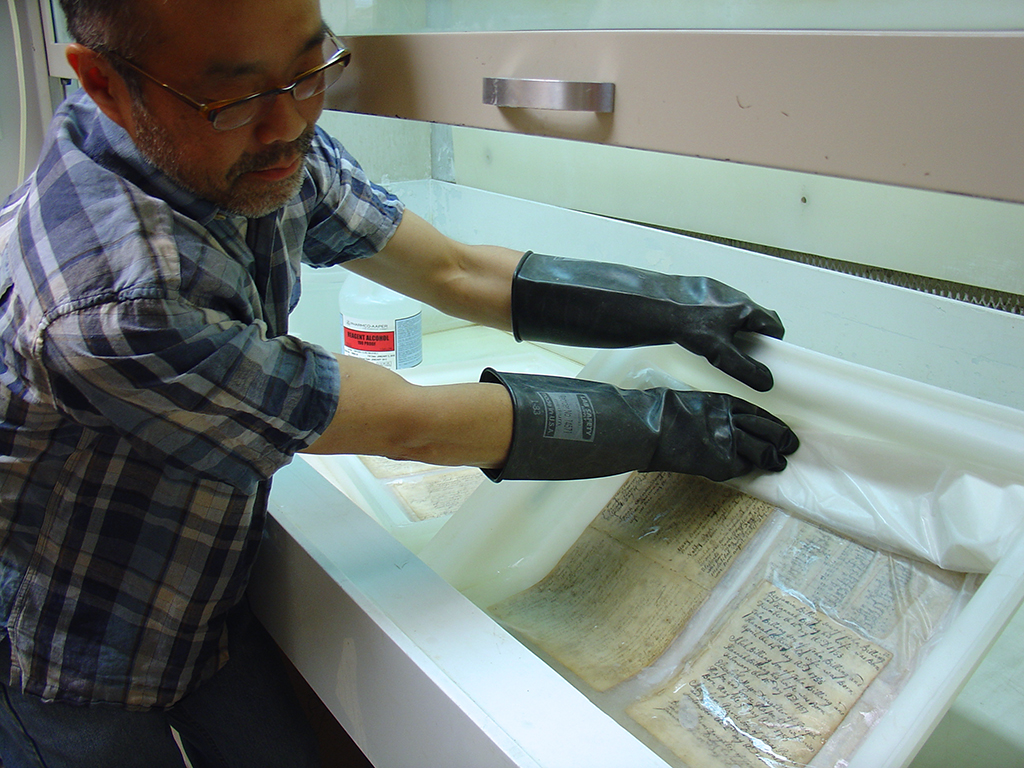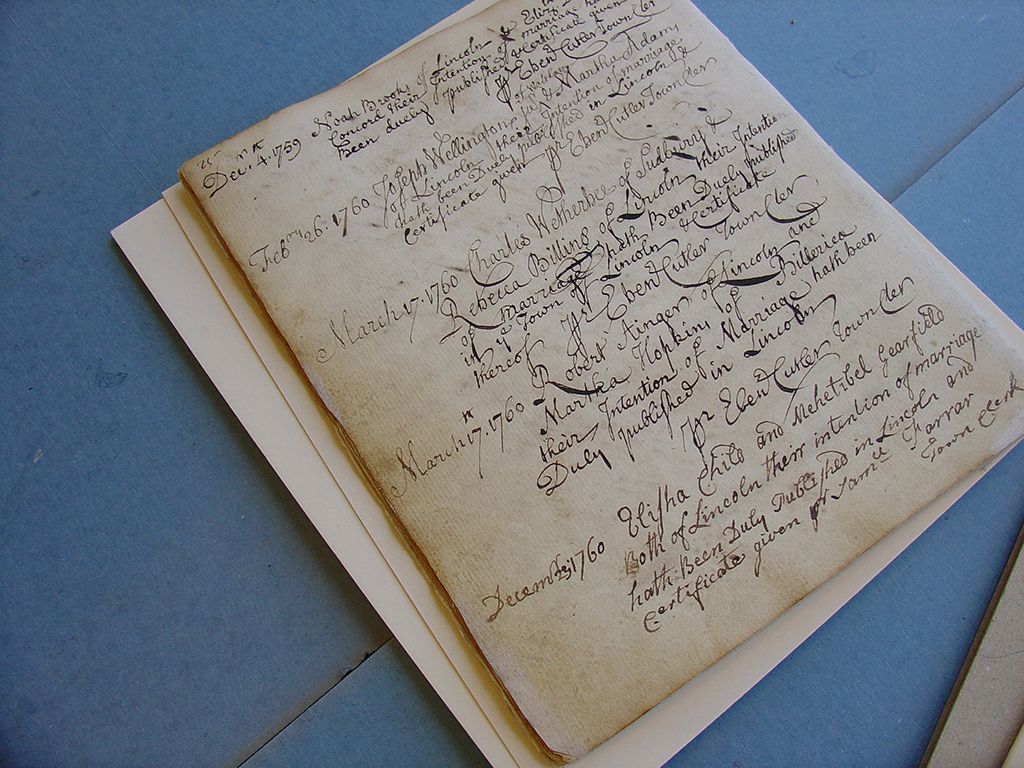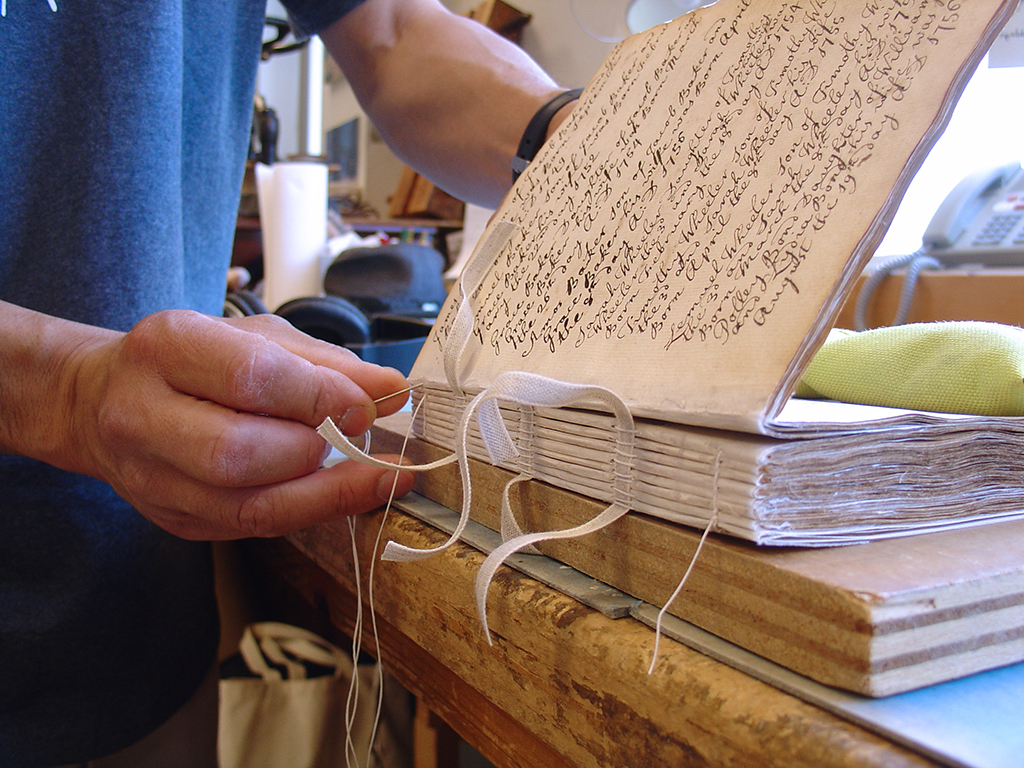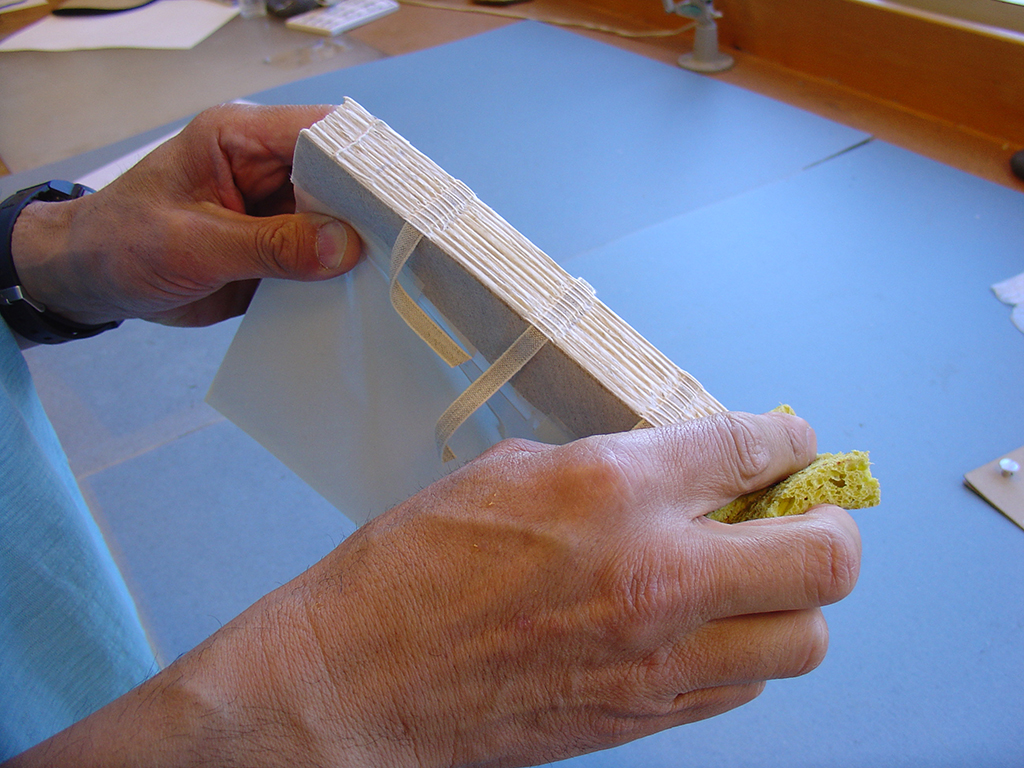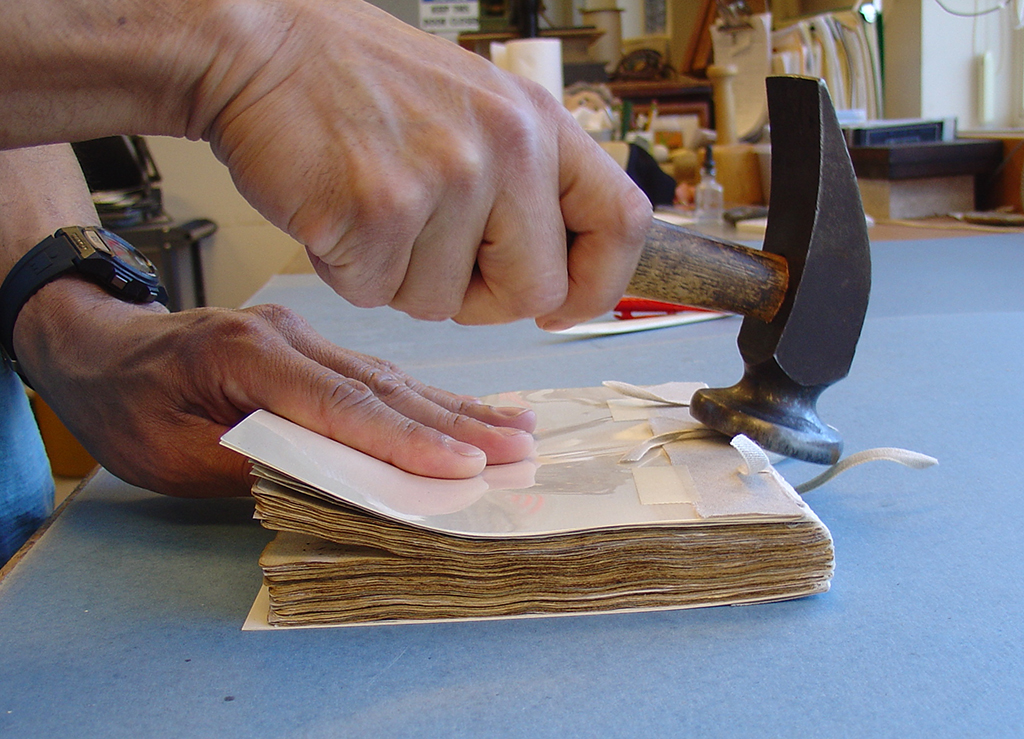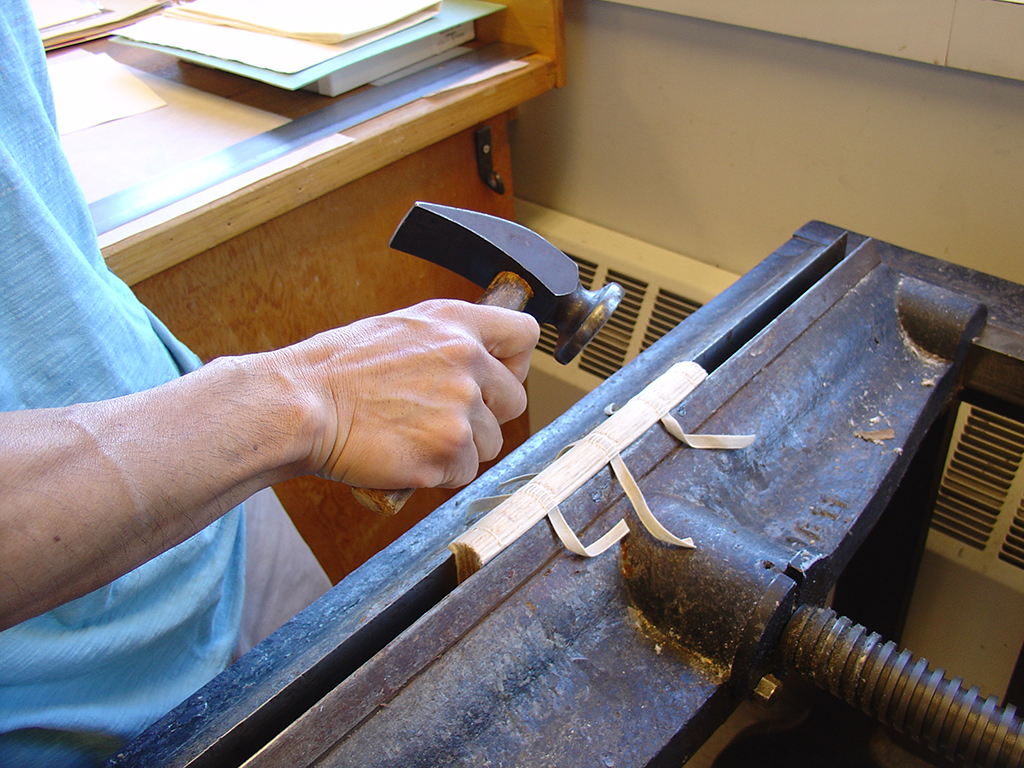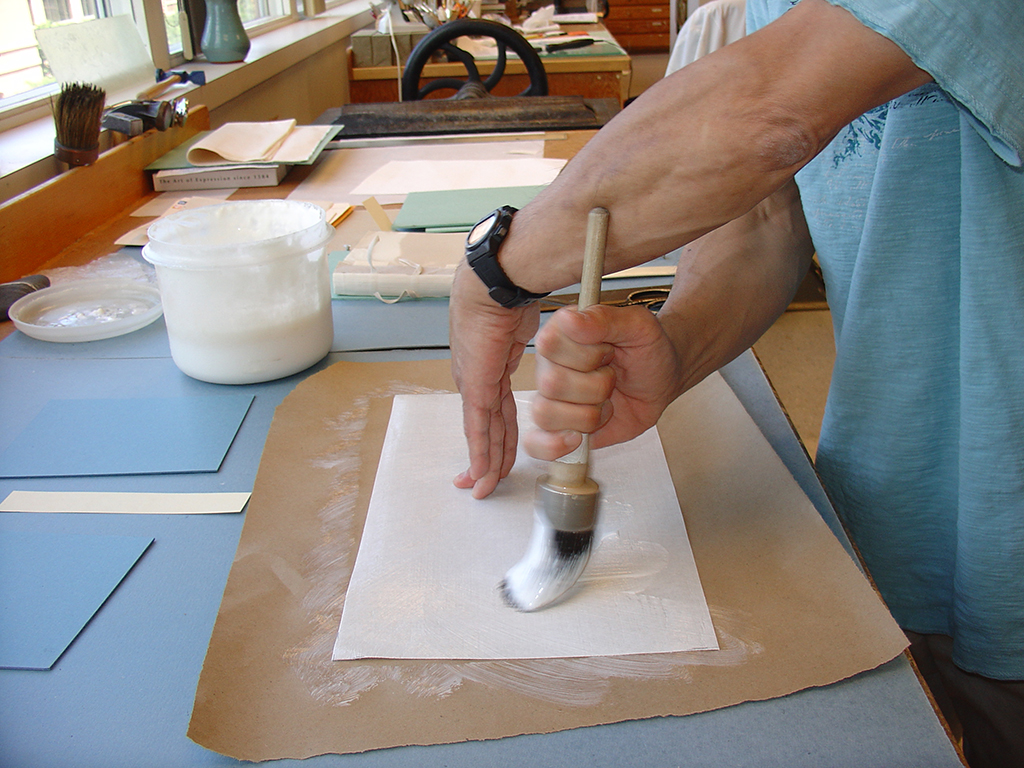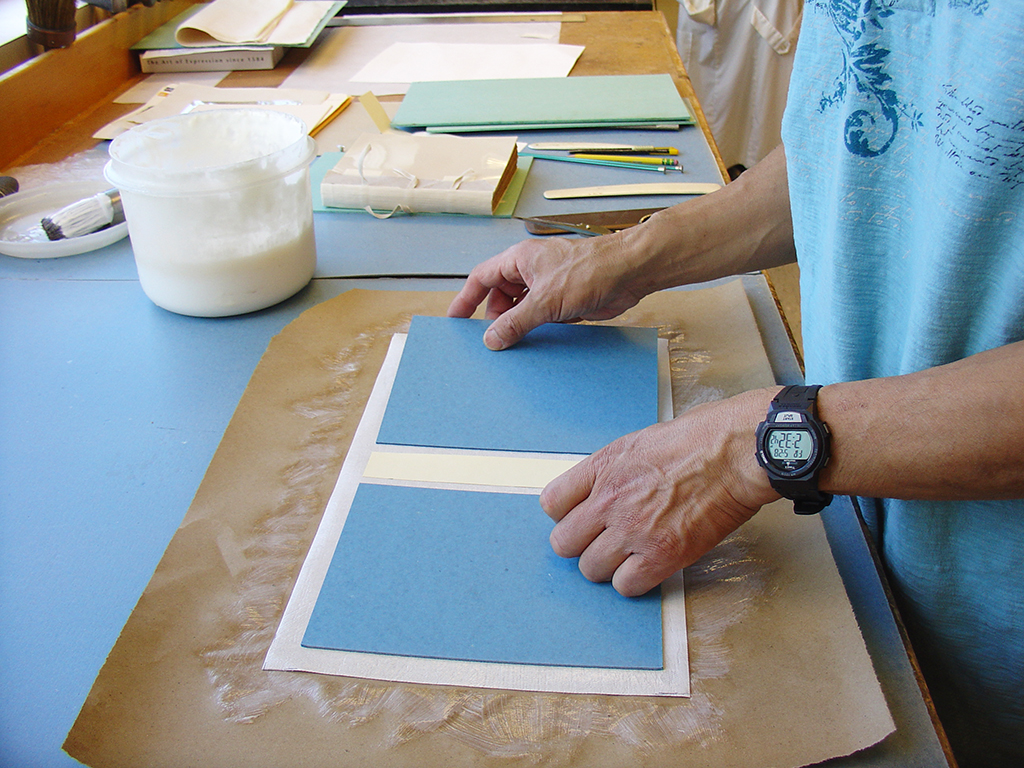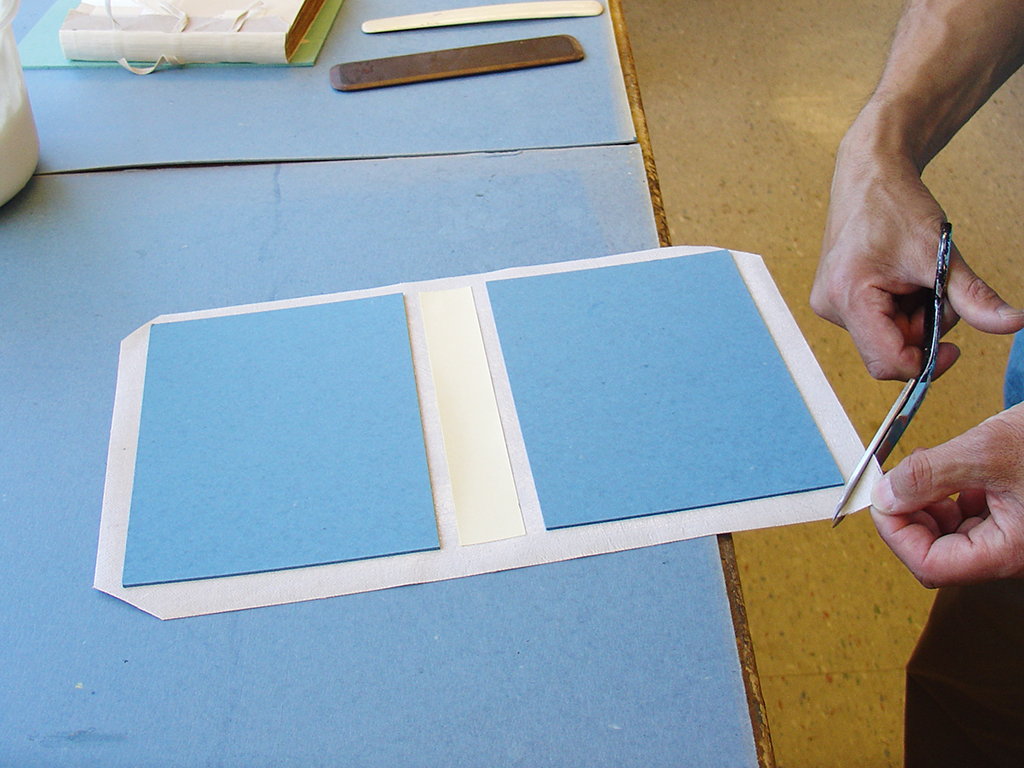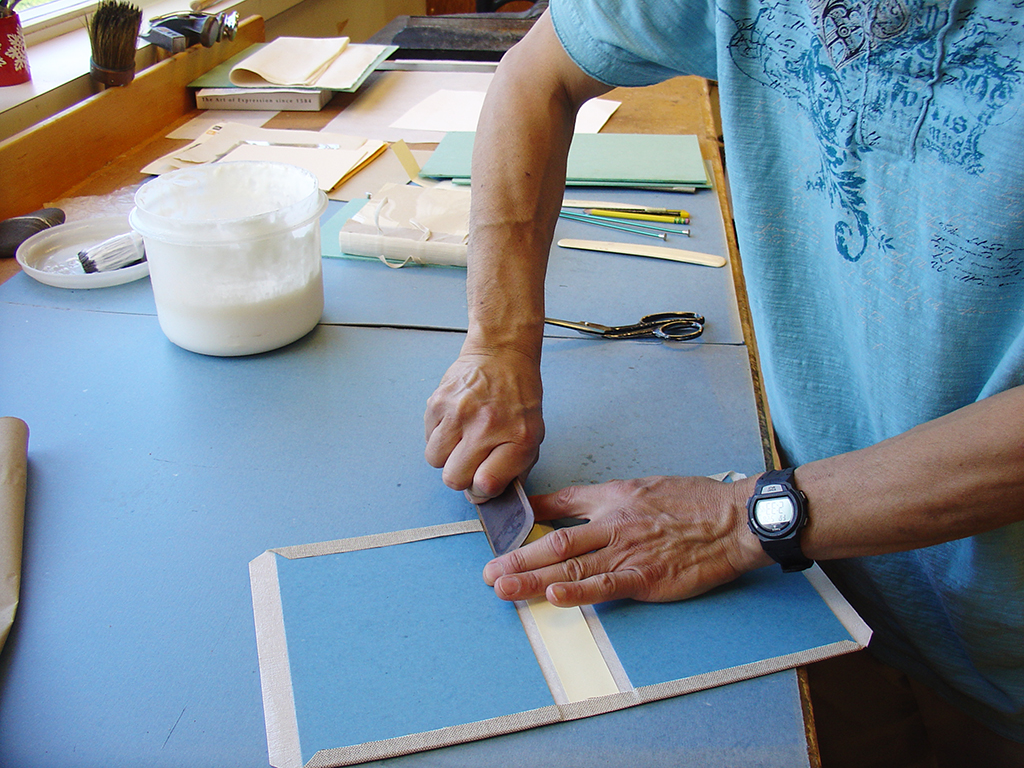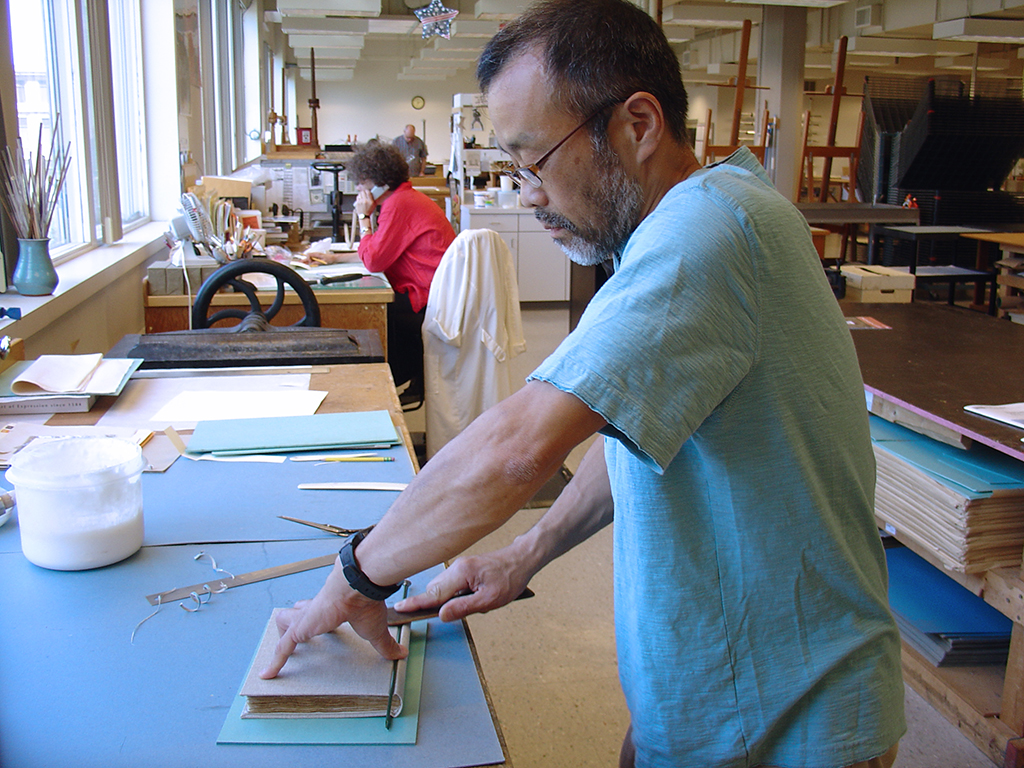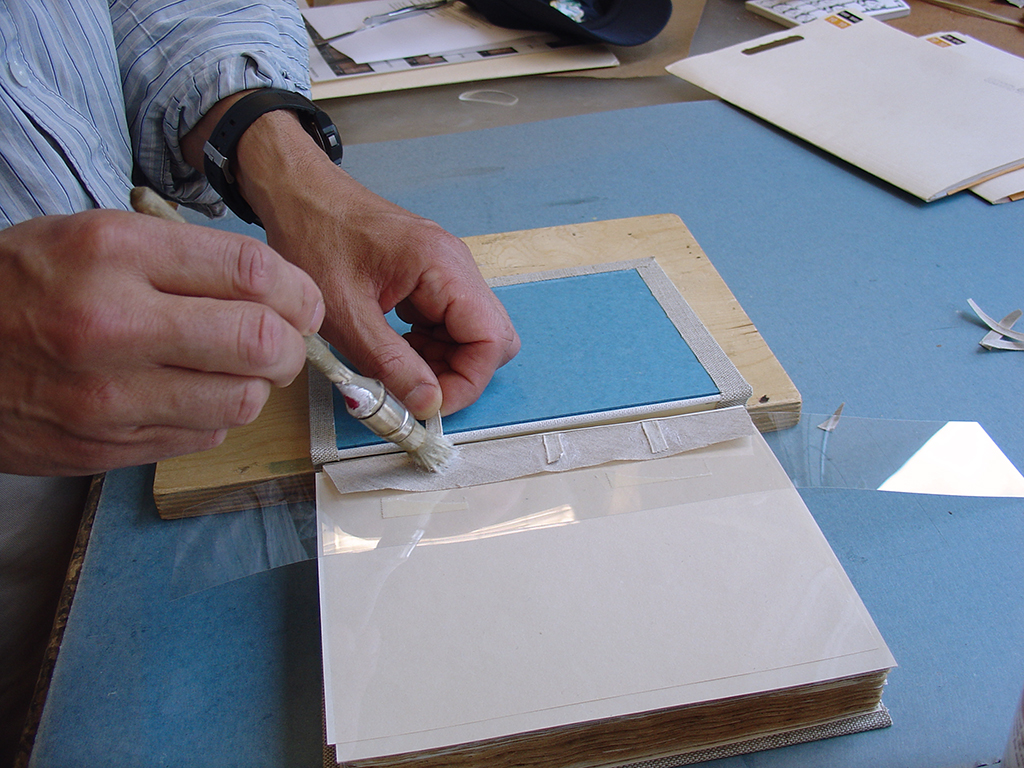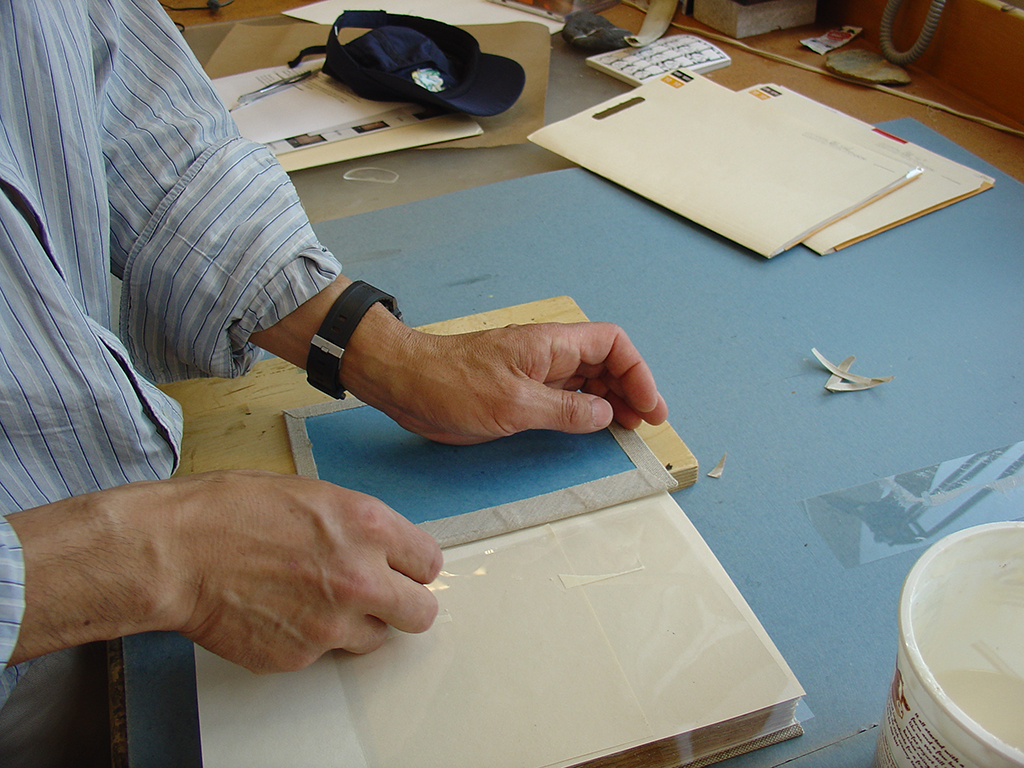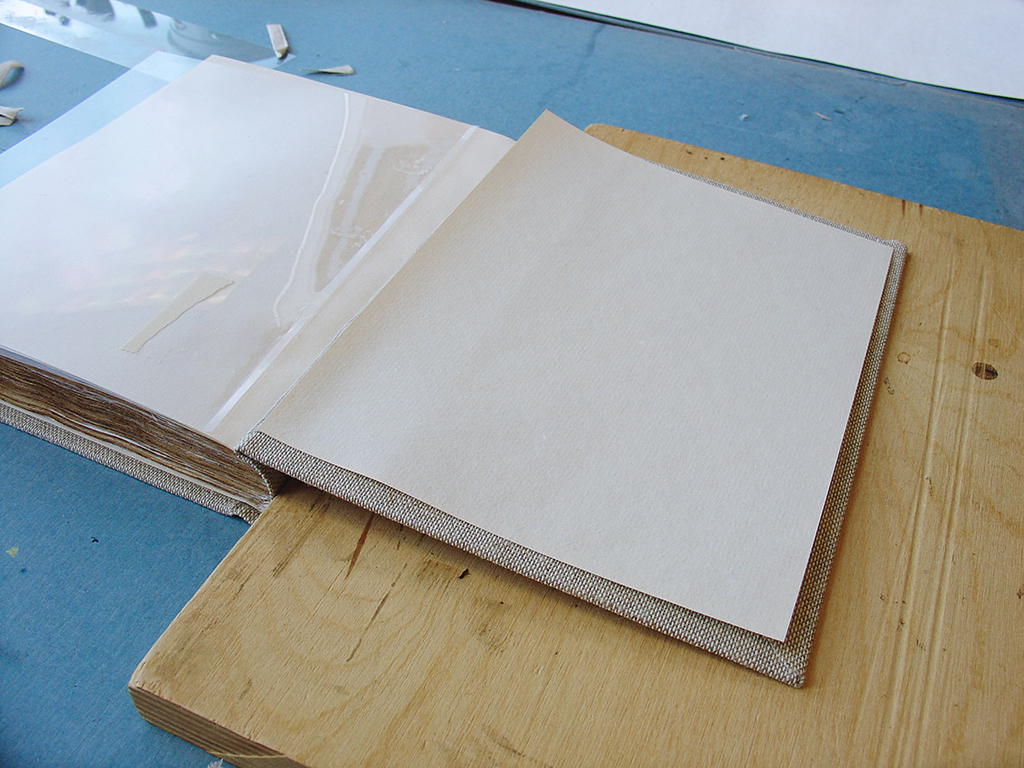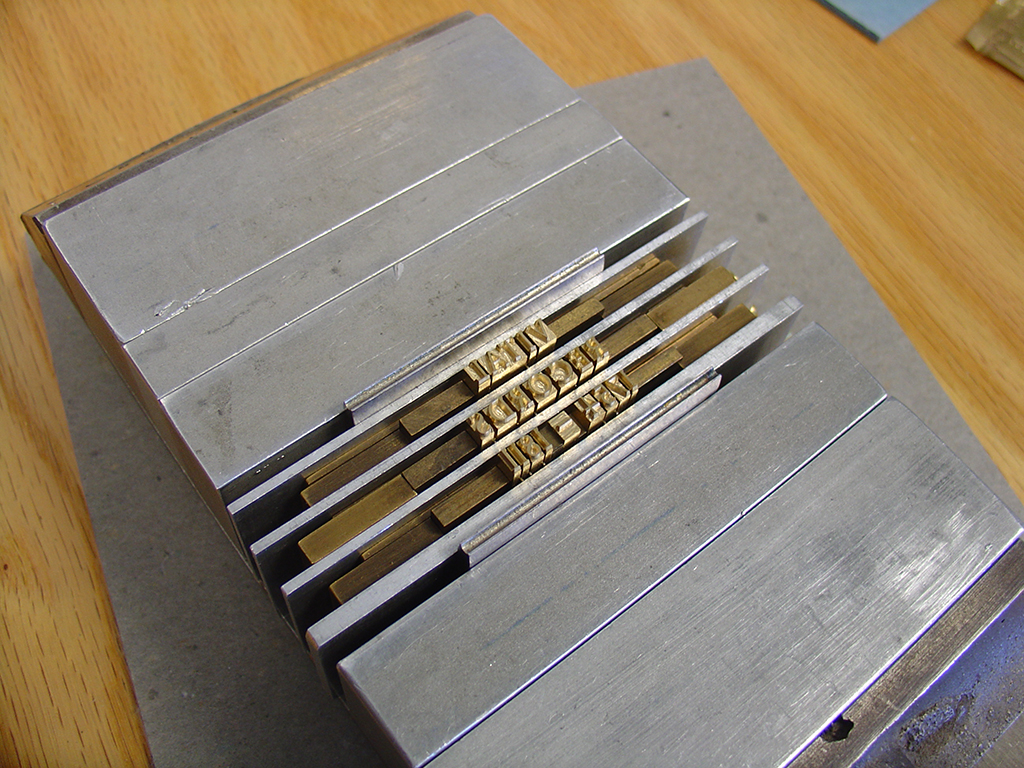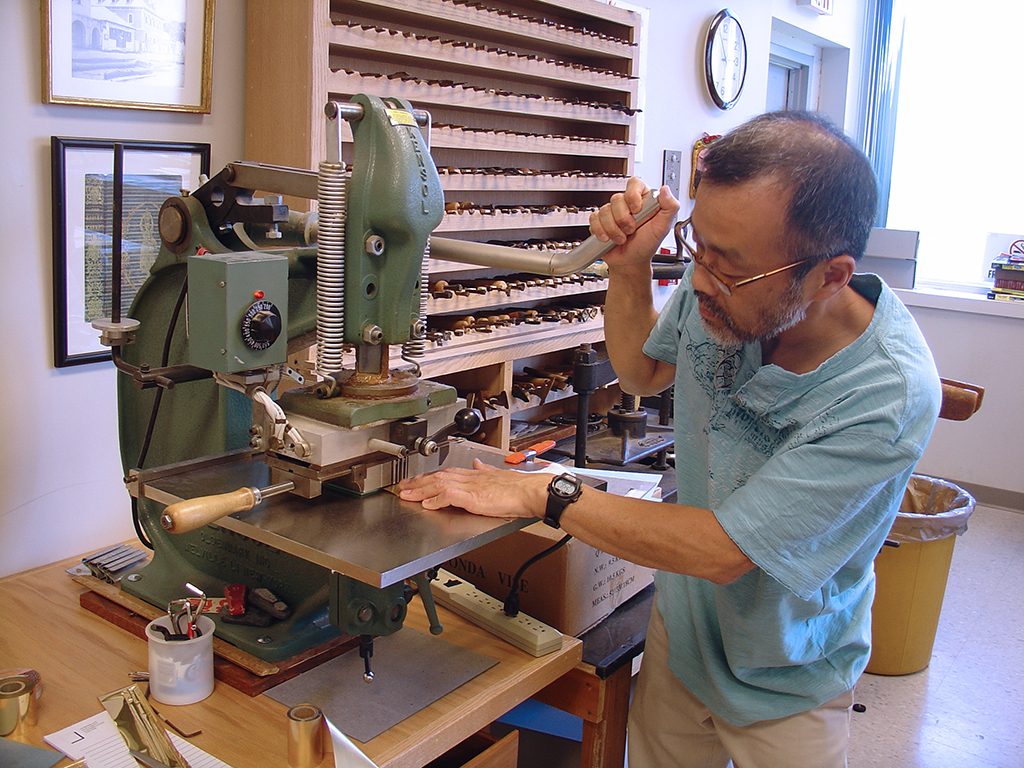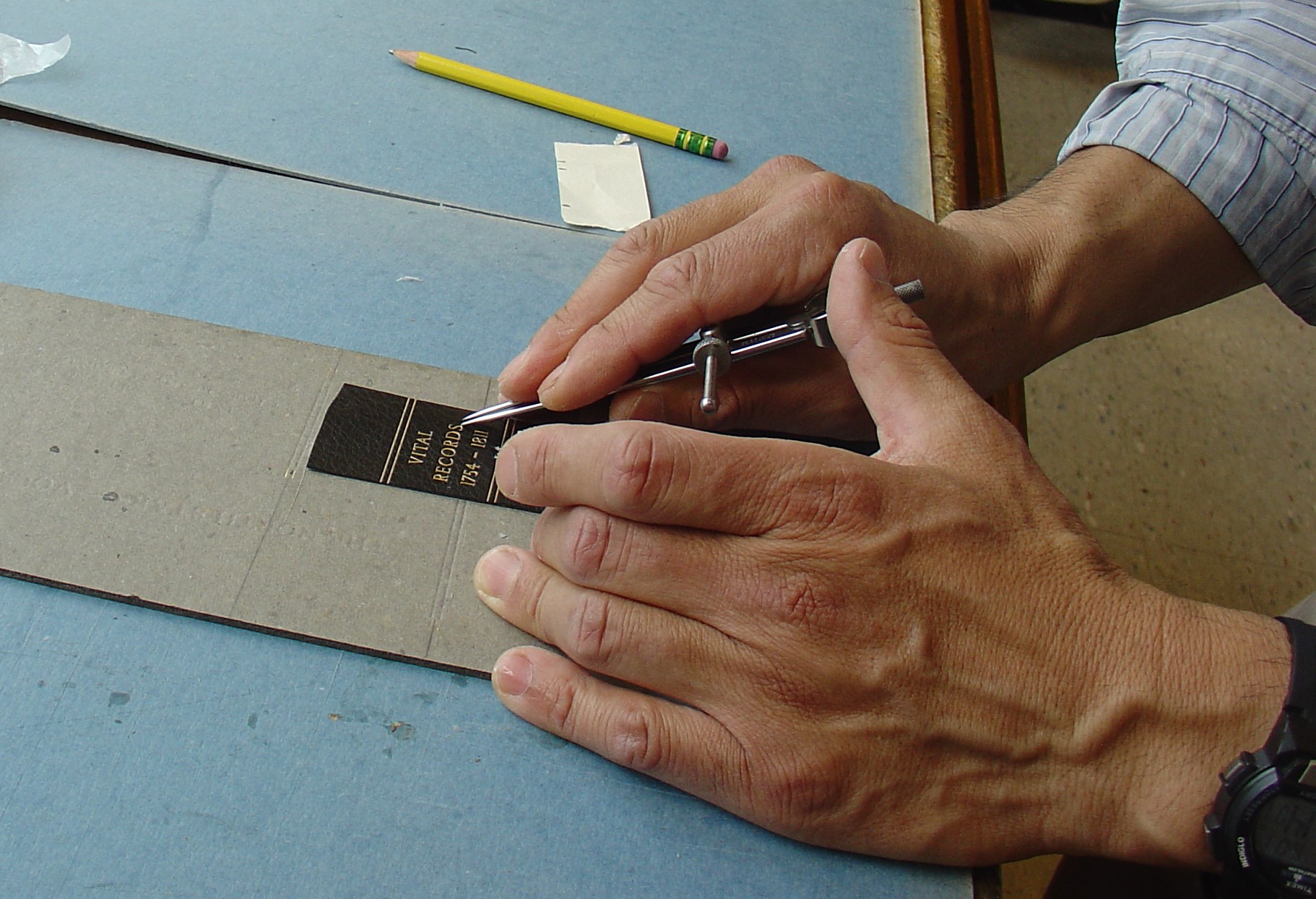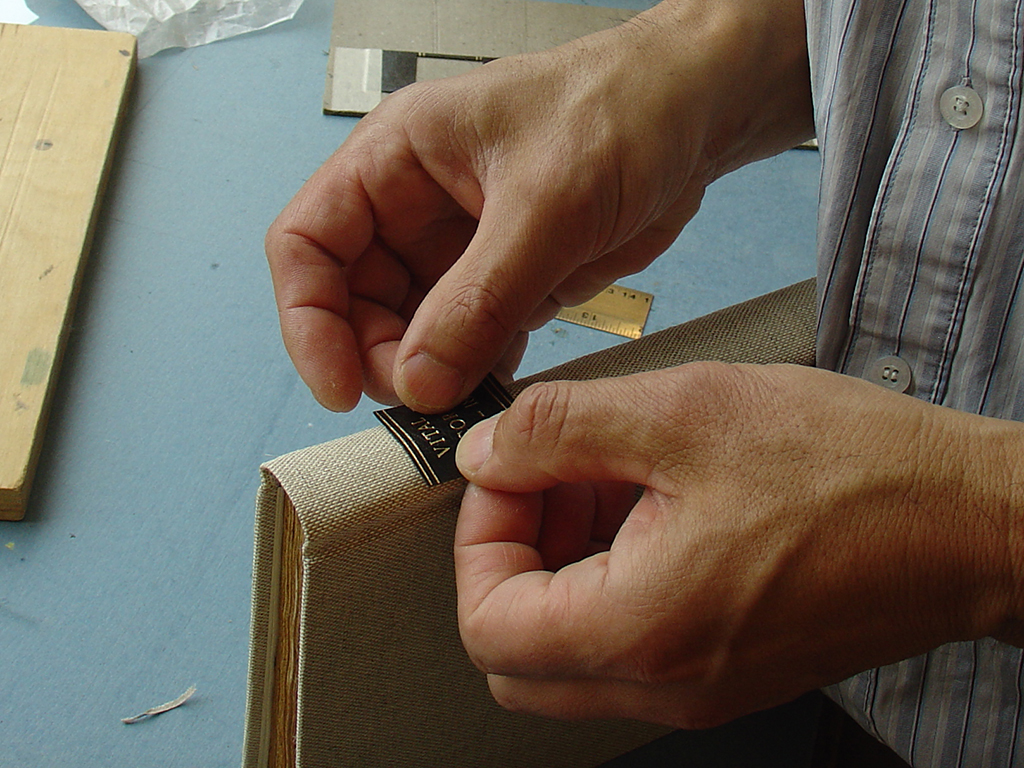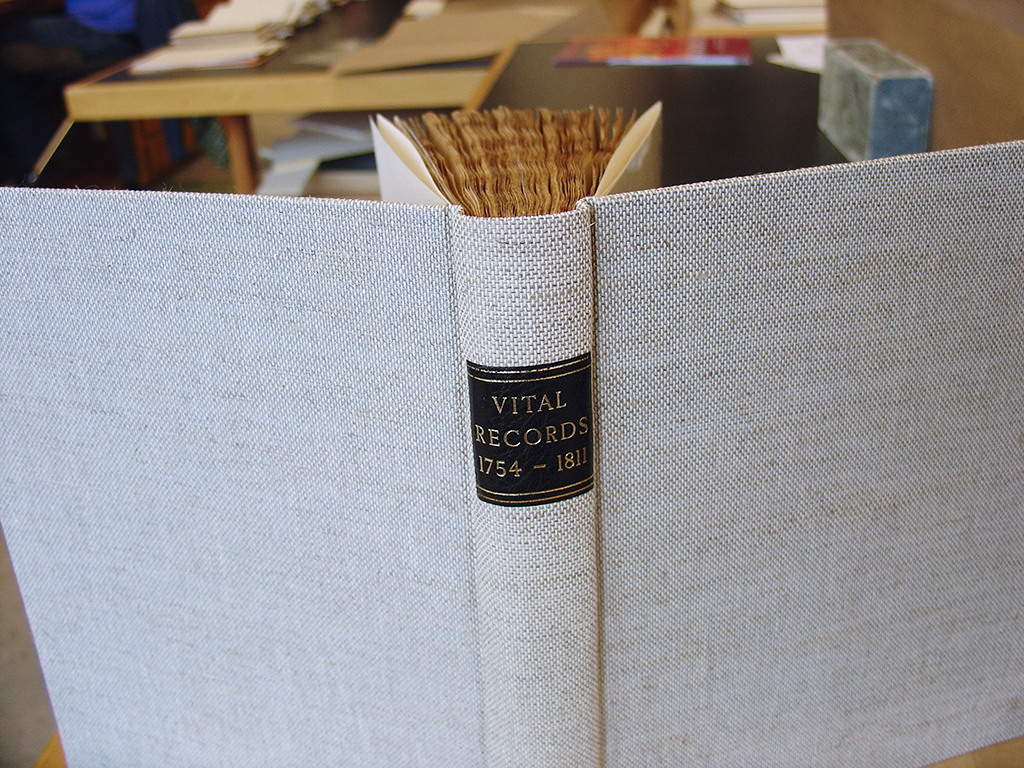image gallery
The Town of Lincoln, Massachusetts sent their first book of Vital Records - 1754-1811, to NEDCC for conservation treatment. The conservation treatment was made possible by the town's Community Preservation Act (CPA) funding.
Steps in the Process of the conservation treatment of a rare Town Record Book, with a New Binding
Before treatment, showing binding condition.

After treatment.
Before treatment. Pages detached.
Before treatment. Pages detached, sewing broken.
Manuscript record book leaves are washed in filtered water and ethanol to reduce discoloration and acidity of paper.

Tears are mended, folds guarded, and losses filled with Japanese paper and wheat starch paste.
Mended leaves are gathered back into sections and lightly pressed prior to resewing.
Sections are sewn through the fold onto linen sewing supports using linen thread.
The spine of the text block is consolidated with wheat starch paste.
A backing hammer is used to give a gently rounded shape to the spine.
The text block is placed in a job backer, and the hammer is used to refine the rounded shape and to create “shoulders” which provide space for the cover boards.
A cloth-covered case binding is made from bookcloth, binders’ board and a Bristol board assembled with PVA adhesive.
All components of the case are precisely measured and cut before assembly.
After the pieces are in position, the corners of the cloth are trimmed and the cloth is turned in.
The cloth is boned down to insure good adhesion.
The text block is placed in position within the case and the grooves are defined insuring proper fit and proper mechanics of the binding.
The linen sewing supports, and linen hinges that are part of the endsheet structure are used to attach the case to the text block.
PVA adhesive is applied, and the supports and hinges are put up onto the inside of the cover boards.
Paper pastedowns of the same handmade paper used for the endsheets are adhered to the insides of the cover boards.
Brass type is set by hand to produce a gold-stamped leather label for the spine of the volume.
The goat leather label is stamped using 23 karat gold foil and Kensol hot stamping machine.
The label is trimmed to the appropriate width for the spine of the volume.
The label is adhered to the spine of the volume.
The end result is a bound volume that functions well, protects the original contents, and is made from stable, high-quality materials.
A digital copy of the Vital Records 1754-1811 volume has now been made available to all on the Digital Commonwealth website. Peruse this beautiful book here.
For more information on Lincoln's successful efforts to preserve the town's records and collections, see the NEDCC Story: Wrought in Lincoln: Town Clerk's Office and Public Library Collaborate to Create the Lincoln Town Archives.


